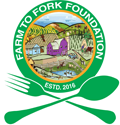Characterization of Trichoderma species isolated from different ecosystems in Myanmar
DOI:
https://doi.org/10.5455/faa.79176Keywords:
Morphology, molecular characterization, Myanmar, SCAR markers, TrichodermaAbstract
The identification of Trichoderma species, existing in different ecosystems in Myanmar was investigated by using morphology and molecular based techniques. A total of 25 isolates of Trichoderma spp. were isolated from the rhizosphere soils collected from different ecosystems. Serial dilution plate technique was used to recover Trichoderma spp. from soil samples. On the basis of colony growth rate, the 21 isolates were observed the same growth rate (30 mm d−1) at 28 ±2 °C while the lowest growth rate (27.34 mm d−1) was observed in isolate Tri17-Mmy. All of isolates were classified into three different groups on the basis of their colony characters and the microscopic observations. The macroscopic and microscopic characters of these isolates were compared with the reported literature and confirmed the group-I iso- lates as Trichoderma harzianum (12 isolates), group-II as Trichoderma viride (8 isolates) and group-III as Trichoderma longibrachiatum (5 isolates). Sequence characterized amplified region (SCAR) markers were used to characterize the isolates by PCR. Among these isolates, 12 isolates of Trichoderma species showed a specific band of 220 bp only in Trichoderma harzianum and 8 isolates also showed a specific band of 990 bp only in Trichoderma viride.
Downloads
Downloads
Published
How to Cite
Issue
Section
License
Copyright (c) 2020 by the author(s). This work is licensed under a Creative Commons.

This work is licensed under a Creative Commons Attribution-NonCommercial 4.0 International License.




















